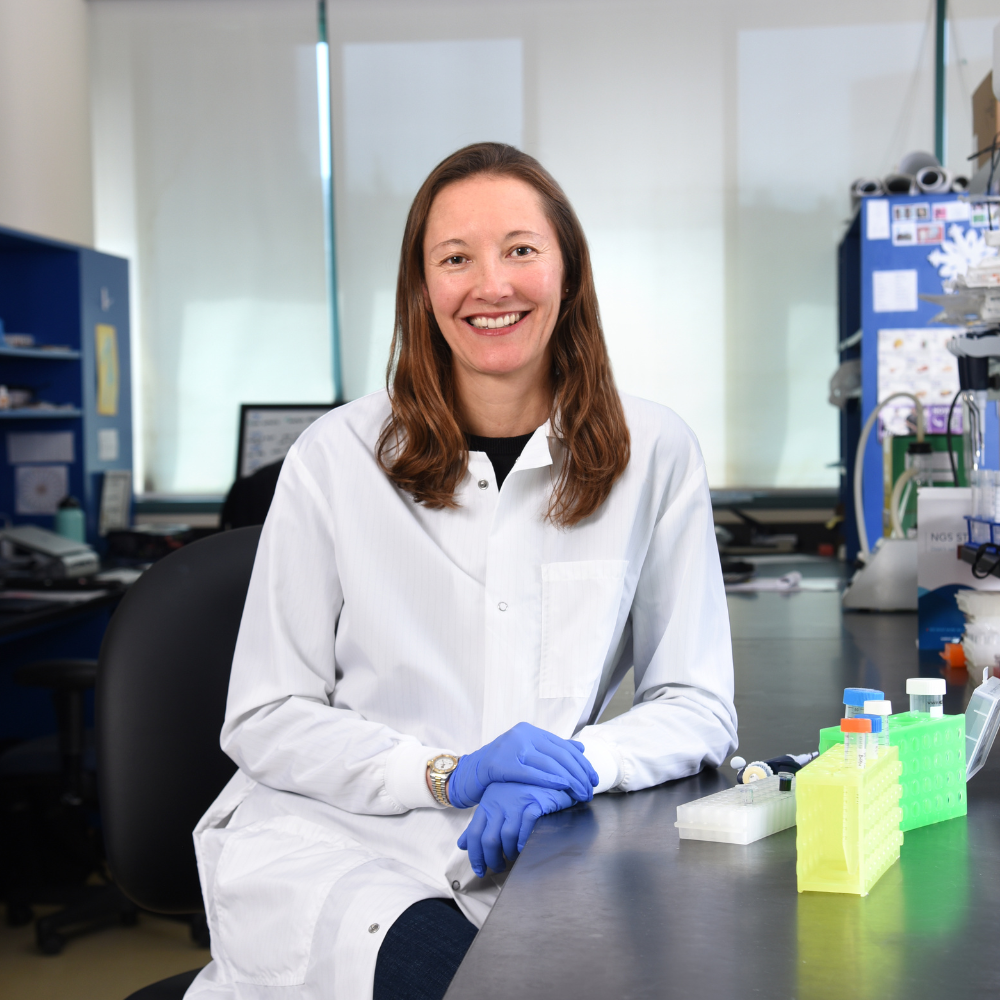
California is home to a wide variety of wild and domestic animals, and some of them — including endangered sea otters — are at a risk of becoming infected with and dying from the parasite Toxoplasma gondii. This dangerous single-celled organism can infect nearly all warm-blooded animals and is spread through contact with contaminated soil and water, or from eating contaminated undercooked meat or shellfish.
Toxoplasmosis, the disease caused by the parasite, can result in serious long-term health consequences in animals, as well as in humans. In fact, it is estimated that Toxoplasma infects about one-third of the human population worldwide and between 11% and 15% of Americans. Few people know more about the impact of Toxoplasma than Professor Melissa Lodoen from the Department of Molecular Biology and Biochemistry, whose research focuses on Toxoplasma infection of the brain and the human immune system’s response to the parasite.

“Most pathogens can’t pass the blood-brain barrier and infect the brain, but not only can Toxoplasma cross it, it can also cross the blood-retinal barrier — and cause an ocular disease — and the maternal-fetal interface, which can cause serious medical issues for the unborn fetus,” said Professor Lodoen.
What’s even more troubling about Toxoplasma is that most people infected do not know they are infected because their immune systems are currently keeping the parasite in check. If these individuals become immune compromised, either from HIV, chemotherapy, or because they must take immunosuppressants, the unchecked Toxoplasma can cause encephalitis — or inflammation of the brain — as well as seizures, blurred vision and damage to other organs.
“Even when there are no overt clinical effects from Toxoplasma gondii infection in people or animals, it’s important to understand what consequences may occur in the long term and in the event of a compromised immunity later in life,” said Professor Lodoen.
To study Toxoplasma, Professor Lodoen’s lab uses a combination of microfluidic systems with human cells, as well as intravital imaging in the mouse brain, to try and understand how the parasite crosses these profound biological barriers and how the immune system responds.
Highlighting the importance of understanding this parasite is a surprising discovery; when mouse models used to study Alzheimer’s disease are infected with Toxoplasma, the mice exhibit reduced levels of the amyloid plaques associated with Alzheimer’s disease and improved cognition. Understanding how the parasite reduces plaques in the brain is an active area of research in the Lodoen lab. Further investigation is required to uncover the vast potential — both positive and negative — of this unique parasite.
Toxoplasma gondii is a health issue among at-risk human and animal populations. Understanding the pathogenesis of toxoplasmosis requires further study on the part of Professor Lodoen and her team and may lead to better detection methods and treatments for this debilitating disease. Such research promises to bring about significant advancements for both people and animals living in California and around the globe.
The 2023 Dean’s Report is focused on the state of California and calls attention to some of the work being done by faculty at the School of Biological Sciences that has a direct impact on the state’s residents and ecosystems, from climate change to diabetes research and much more.
